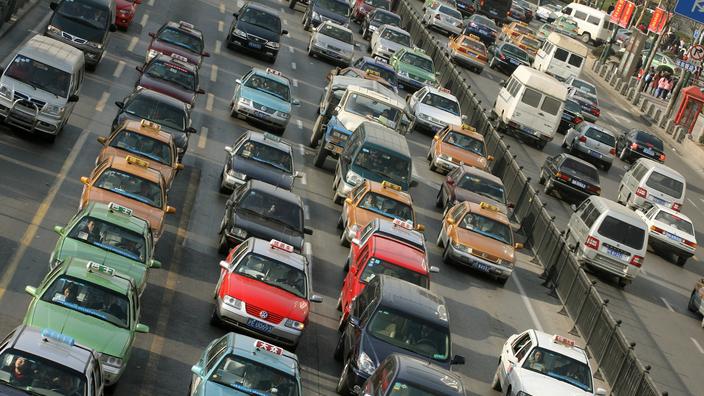The Covid crisis was only a parenthesis for the climate and global emissions of CO2, the main greenhouse gas, have picked up again, leaving less and less time to counter global warming, warns a study published Thursday, November 4.
The pandemic had shut down much of the world and its highly fossil fuel-dependent economy, causing total emissions to drop dramatically by 5.4% in 2020. But in 2021, they are expected to rebound by 4.9% to get closer to less than 1% of the absolute record of 2019, according to this study by the Global carbon project, published on the occasion of the COP26.
This group of international scientists studies global carbon “budgets”, or the amount of CO2 that can be emitted for a given result.
To discover
Covid-19: the third vaccine dose, instructions for use
Read also COP26: an international agreement to try to "get out of coal"
Because despite the promises of post-Covid “green” recovery plans, this recovery is mainly done with fossil fuels: emissions due to coal should thus exceed their level of 2019, that is to say before the crisis of Covid, although below their all-time high of 2014, and those due to gas reach their all-time high.
Of course, emissions from oil, projected to increase by 4.4% for 2021, do not catch up with their 2019 level, but the authors stress that the transport sector has not yet recovered to its pre-crisis levels and that the rebound is therefore likely to accelerate.
As a result, the remaining “carbon budgets” so as not to exceed the objectives of the Paris Agreement, ie a warming compared to the pre-industrial era clearly below + 2 ° C, and if possible at + 1.5 ° C, s 'are decreasing dangerously, while the level currently reached is evaluated between + 1.1 ° and + 1.2 °.
At the rate of 2021, to have a 50% chance of holding + 1.5 ° C, there are eight years of emissions remaining, 20 years to limit warming to + 1.7 ° C and 32 years to + 2 ° C.
If we hope to increase the odds to 66%, the duration drops further: 8 years at 1.5 ° C, 16 years at + 1.7 ° C and 27 years at + 2 ° C.
Read also100 countries sign an agreement on methane
Time is therefore running out, as shown by the resurgence of climatic disasters of all kinds - floods, droughts, mega fires - with their procession of victims, displaced populations or threatened with famine. The study is therefore a
"reminder to the reality of what is happening in the world while we are discussing in Glasgow how to fight climate change"
, underlines for AFP the climatologist Corinne Le Quéré, one of the authors. Because the fall linked to Covid
“has never been the result of a structural change. Putting your car
(temporarily)
in the garage or switching to an electric car, it's not the same thing ”
.
And in the absence of these changes,
"the rebound was even stronger than I thought,"
says Glen Peters of the International Center for Climate Research, another author of the study.
As it stands,
"we could expect to see emissions grow again," he
told AFP, while before the pandemic, scientists hoped that 2019 could mark a peak in emissions.
Read also COP26: limit warming to 1.5 ° C, an ambitious but essential goal
The geographic distribution of emissions for 2021 illustrates these fears. China, the world's leading emitter since 2007 with around a quarter of emissions, will see its share jump to 31% in 2021. This share could have been pushed up, because the country emerged from the Covid crisis before the others. Chinese emissions had indeed grown by + 1.4% in 2020, while those of the United States, the world's second largest emitter, fell by 10.6%, those of the European Union, third emitter, by 10.9%. and India, fourth, 7.3%. The 2021 projections call for increases of 4%, 7.6%, 7.6% and 12.6% respectively.
The authors of the study therefore call for
“immediate action and global coherence in the global response to climate change”
.
With a glimmer of hope.
Over the decade 2010/19, they identified 23 countries, representing around a quarter of global CO2 emissions, where emissions have fallen substantially, while the economy has been growing.
For a good half of the highly developed countries, which therefore have the means, and the regulations, to tackle the problem.














